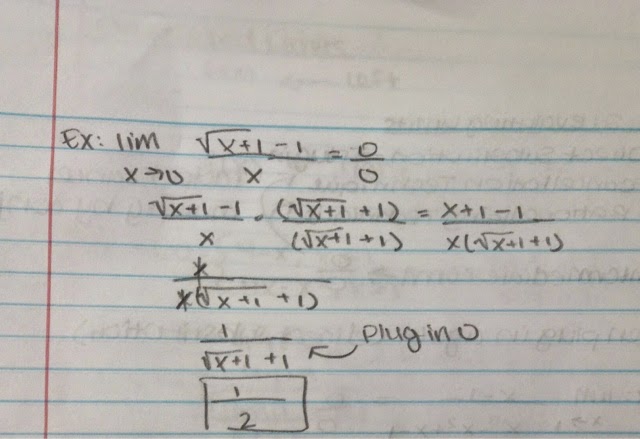Today we learned how to make graphs of polar equations.
Symmetry tests for polar coordinates
1. Replace θ with -θ. If an equivalent equation results, the graph is symmetric with respect
to the polar axis.
2. Replace θ with -θ and r with -r. If an equivalent equation results, the graph is symmetric
with respect to θ = π .
3. Replace r with -r. If an equivalent equation results, the graph is symmetric with respect
to the pole.
Note: It is possible for a polar equation to fail a test and still exhibit that type of symmetry.
There are four main types of graphs of polar equations:
Circles
1. r = a cos θ is a circle where “a” is the diameter of the circle that has its left-most edge at
the pole.
2. r = a sin θ is a circle where “a” is the diameter of the circle that has its bottom-most edge
at the pole.
Limaçons (Snails)
1. r = a ± b sin θ, where a > 0 and b > 0
2. r = a ± b cos θ, where a > 0 and b > 0
-The limaçons containing sine will be above the horizontal axis if the sign between a and b is plus or below the horizontal axis if the sign if minus.
-If the limaçon contains the function cosine then the graph will be either to the right of the vertical axis if the sign is plus or to the left if the sign is minus.
-The ratio of a to b will determine the exact shape of the limaçon.
Rose Curves
A rose curve is a graph that is produced from a polar equation in the form of:
r = a sin nθ or r = a cos nθ, where a ≠ 0 and n is an integer > 1
The number of petals that are present will depend on the value of n. The value of a will determine the length of the petals.
Lemniscates
Lemniscates have the general polar equation of:
r2 = a2 sin 2θ or r2 = a2cos 2θ, where a ≠ 0
A lemniscate containing the sine function will be symmetric to the pole while the lemniscate containing the cosine function will be symmetric to the polar axis, to θ = 2π , and the pole.
Math joke of the day:
A team of engineers were required to measure the height of a flag pole. They only had a measuring tape, and were getting quite frustrated trying to keep the tape along the pole. It kept falling down, etc. A mathematician comes along, finds out their problem, and proceeds to remove the pole from the ground and measure it easily. When he leaves, one engineer says to the other: "Just like a mathematician! We need to know the height, and he gives us the length!"
.jpg)







































.jpg)
.jpg)
.jpg)

